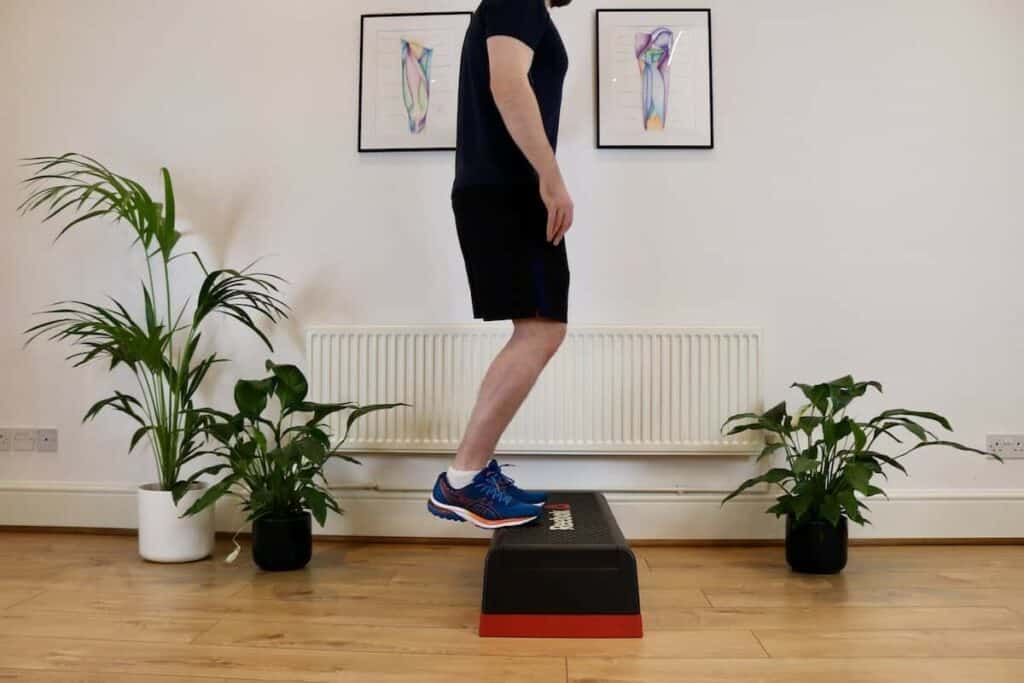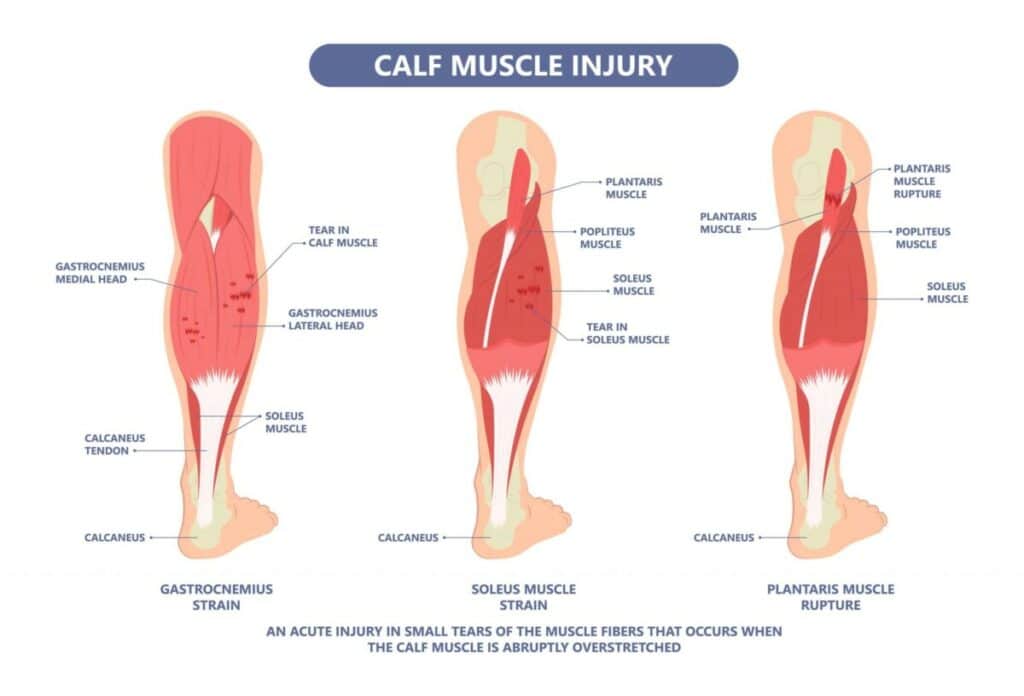Tight Calves Running
- Outside Ankle Pain: Running, Standing, Walking - February 14, 2024
- Plantar Fasciitis Taping - January 30, 2024
- Peroneal Tendonitis Taping - January 30, 2024
The calf muscles work throughout your running stride, so they can quickly become overloaded and tight. There can be several reasons for this, and we will explain why you get tight calves running and how to ease your tight calves from running. Below are the 3 key reasons you can experience tight calves running.
Weak Calf Muscles

One of the primary factors that cause tight calves to run is that the calf muscles aren’t strong enough to tolerate the demand when running. The calf consists of two main muscles: the Soleus and the Gastrocnemius. Depending on the knee position, one of the calf muscles can work harder than the other, but they primarily work to stabilise the knee and ankle plantar flex the foot (push-off).
When we run up to 9 times, our body weight is placed through our calf and Achilles tendon, which helps to explain why strengthening them is so important. When a muscle fatigues, it tightens and provides discomfort during and after a run.
So, the more robust your calf muscles are, the less likely they become tight.
We recommend calf raises either off a step or using a leg press machine to strengthen your calves. Running is an endurance sport; even short distances, each step places high demands on your calf muscle, so aim for 3 sets of 30 repetitions with your knee bent and knee straight 3 times a week.
Poor Running Technique

Your Running technique can influence where force is placed on your calf muscles. In the simplest form, this is mostly when comparing forefoot running to heel striking. Forefoot running places a constant isometric contraction on your calf muscles, demanding powerful calf muscles to prevent them from becoming tight.
The peak middle stance position is essential to consider; this is when all your weight is on one leg directly under your body. We should aim to have a 90º ankle between your foot and shin; however, excess knee bend places a sizeable eccentric contraction on your calf muscle.
Ideally, when we run to lower the stress placed on our calf muscles, we should aim for a high cadence of 171-180 steps per minute and try to run upright to offload our calf muscles and reduce the potential for tight calves running. Another solution is to wear a high-drop running trainer of at least 10mm to reduce the workload on the calf muscle.
Muscle Tears

The Soleus muscle is a large, flat muscle that sits deep within our calf muscle group. The Soleus muscle can be vulnerable to small progressive tears over time when running, which is often misdiagnosed as tight calves.
A typical pattern of a Soleus muscle tear is discomfort that builds during a run, similar to a tightening sensation that gradually worsens until you have to stop running. This injury is often misdiagnosed because the discomfort eases immediately when you stop running; there are no visible signs of a muscular injury, such as bruising or swelling.
Upon testing, a Soleus muscle tear can be painful when carrying a bent knee stretch off a step or doing single-leg maximal hops on the spot. Treatment for this injury typically consists of strengthening exercises and resting from impact activity to allow the muscle time to heal. These injuries require careful management, and we recommend seeing a Physical Therapist if you suspect you have a Soleus Tear.
_______________________________________________________________________
We are specialists in treating foot conditions such as calf muscle tears, and you can see one of our Foot and Ankle Specialists in our clinic in Fulham, South West London.
Related Articles
Best Exercises for Flat Feet – Best Shoes for Plantar Fasciitis – Foot Pain Chart
Feel Good, Move Well, Be Better
